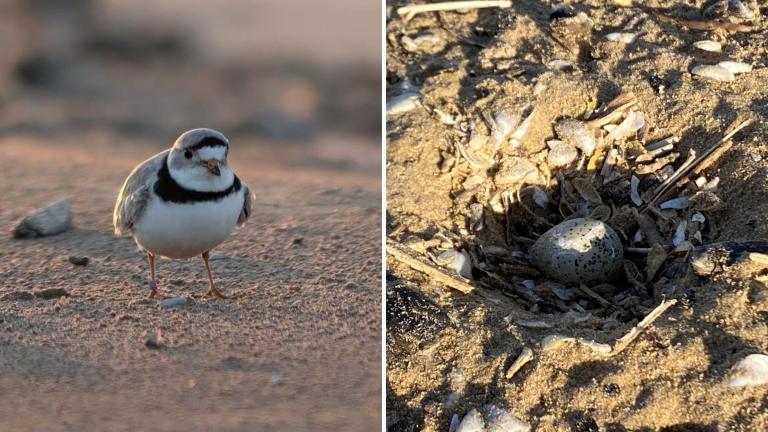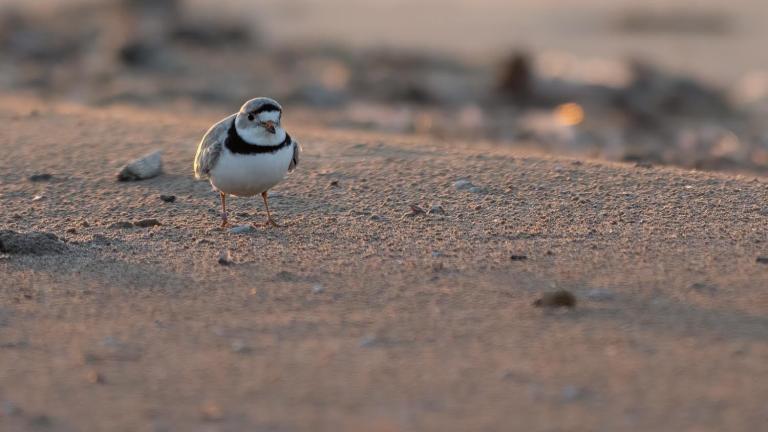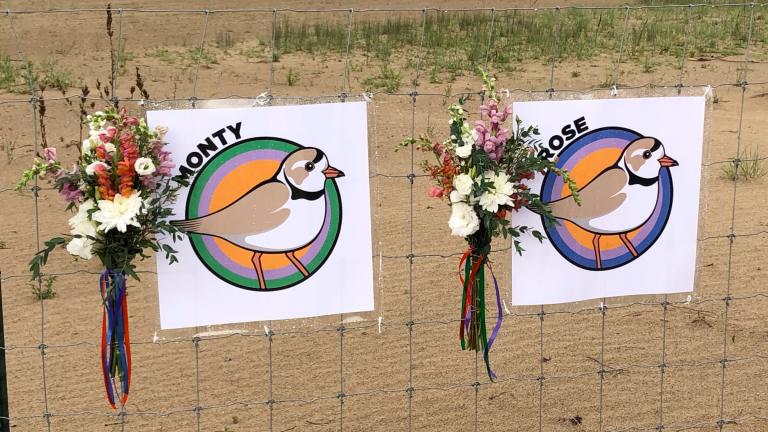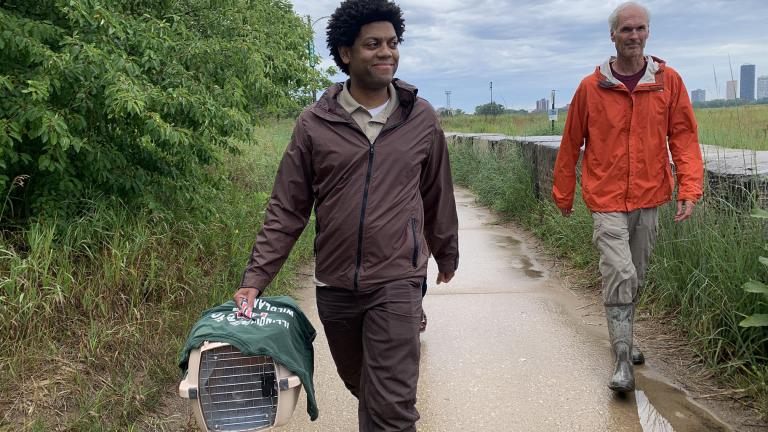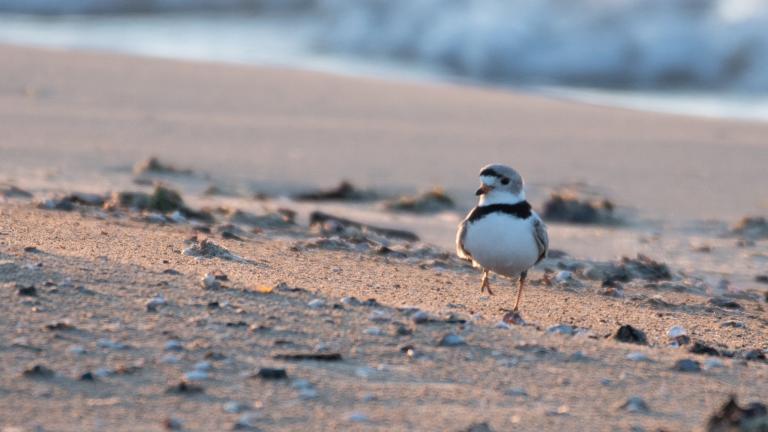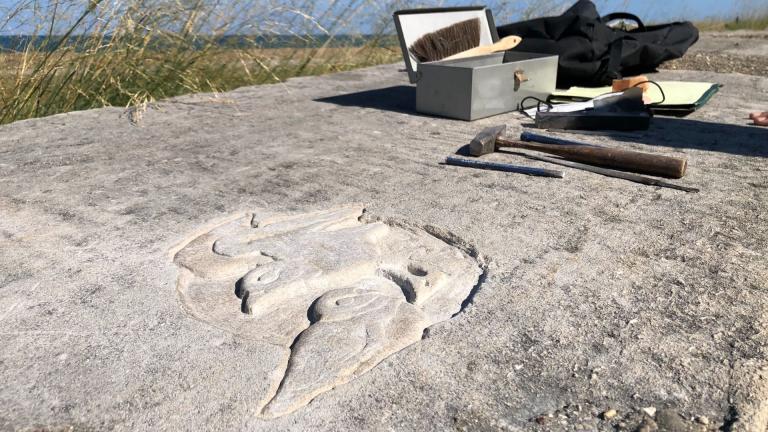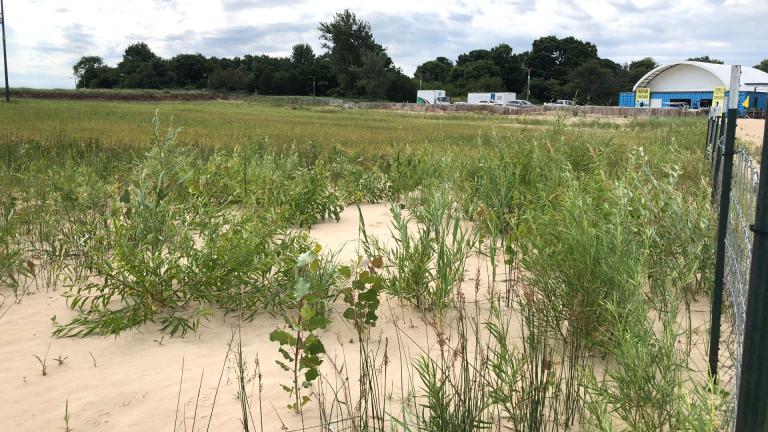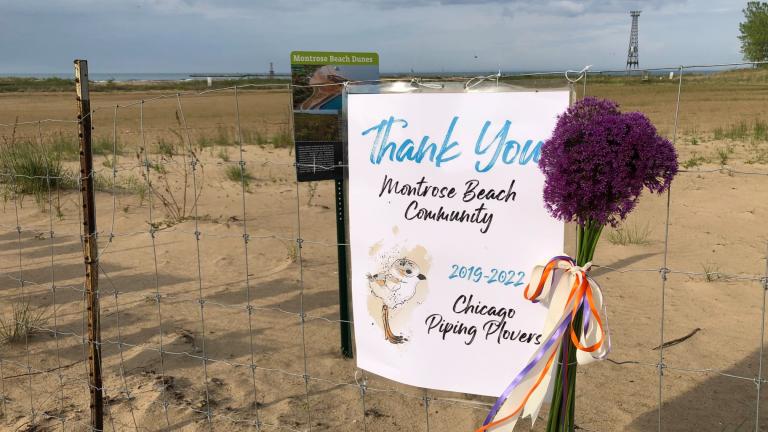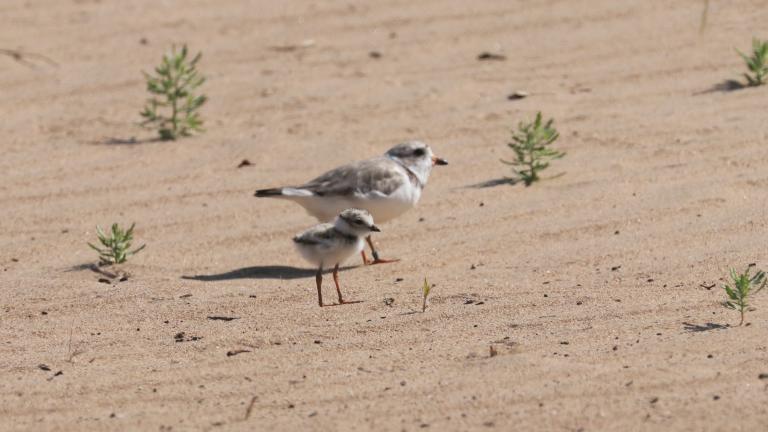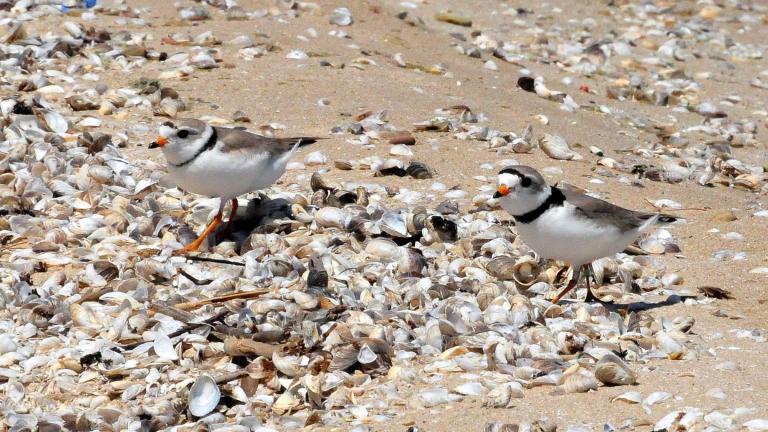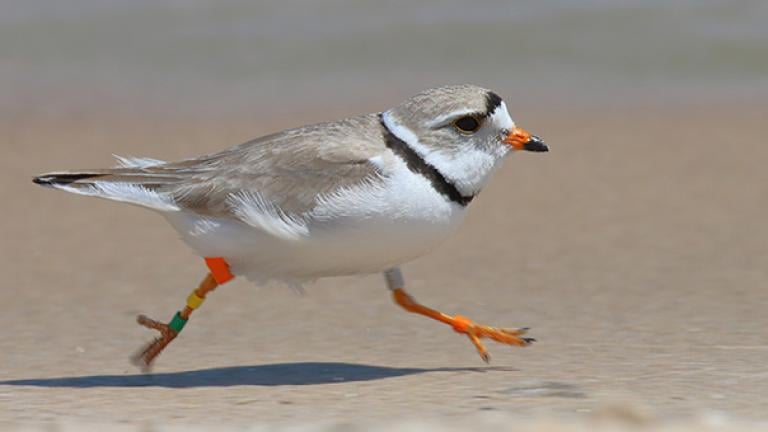The egg is the product of a recent pair bond between native-born Imani, who hatched at Montrose Beach in 2021, and Searocket, one of the 5-week-old captive-reared piping plover chicks released at the beach last year.
Montrose Beach
Chicago’s own Imani has been joined by at least two other plovers, one believed to be a female. Let the mating games begin.
Imani is the son of Chicago's beloved late piping plover lovebirds, Monty and Rose.
The Park District Board of Commissioners voted Wednesday to rename the plovers’ Montrose Beach meeting spot the Monty and Rose Wildlife Habitat.
Three endangered piping plover chicks were released into the wild Wednesday at a protected site at Montrose Beach in an effort to aid in its species recovery. It marks the first time plovers have been released in the state.
Piping plovers might not be on the nest in Chicago this year, but 2023 is shaping up as a banner breeding year for the birds across the Great Lakes.
The two unidentified plovers — one male, one female — that had joined Imani at Montrose have flown the coop, temporarily dashing the hopes of plover monitors for a love match and successful nesting season in Chicago.
Plover Watch: Female Plover Joins Imani and Mystery Bachelor at Montrose, Let the Dating Games Begin
There’s a love triangle brewing at Montrose Beach, where Imani the piping plover has been joined by a mystery bachelor and … a female.
Chicago’s birders are celebrating the arrival of Imani at Montrose Beach. The piping plover is a 2021 chick of Monty and Rose.
The beloved duo live on in limestone, their instantly recognizable images carved into a block of the rock wall that separates the dunes from an adjacent paved path. They now join the thousands of modern-day “petroglyphs” that date back to at least the 1930s.
Some people are concerned about what they say are deteriorating conditions at the high-quality habitat where the endangered plovers Monty and Rose raised their three successive broods of chicks between 2019 and 2021.
On Wednesday evening, a memorial was held for the beloved piping plovers Monty and Rose, not so much to mourn the loss of the birds but to celebrate the wonder of their time in Chicago.
Imani, born in 2021 to Monty and Rose, has been spotted at Montrose Beach after being sighted last week in Minnesota.
A week after suffering the devastating loss of Monty, one half of Chicago’s beloved piping plover power couple, the city’s birding community has cause for celebration: One of Monty and Rose’s 2021 chicks has been positively ID’d on a beach in Duluth, Minnesota.
The enthusiasm for the beloved duo is heartwarming but it’s also overwhelming and potentially dangerous for the birds, according to plover monitors. People should keep a distance of at least 30 feet from the plovers.
Monty the piping plover has once again seemingly defied physics and returned to Chicago a mere day after reportedly leaving his wintering grounds in Texas.

